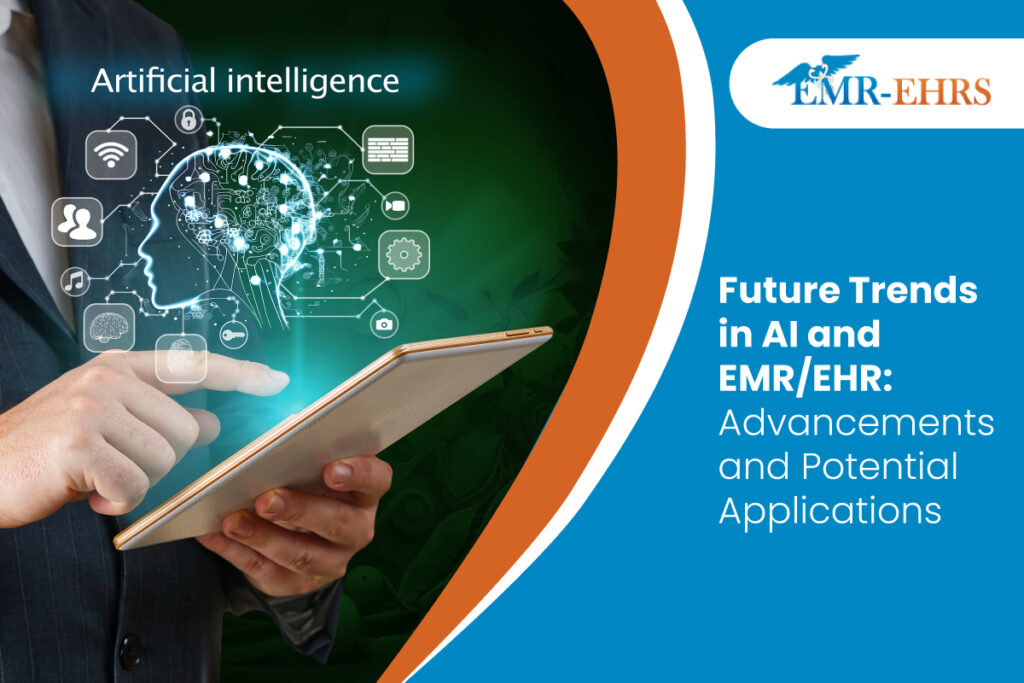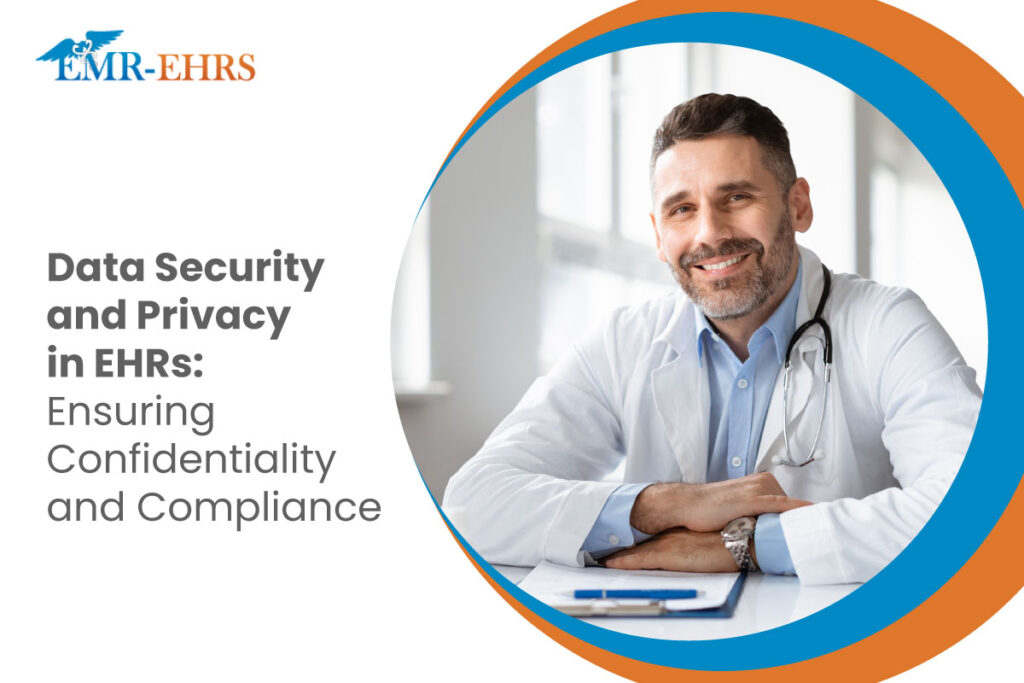
Future Trends in AI and EMR/EHR: Advancements and Potential Applications
Do you remember the last time you manually pulled patient records from that old file cabinet in your office corner? It was a hassle, wasn’t it? Thanks to electronic health record (EHR) systems, providers and their staff no longer have to bear the struggle of manual file pull-outs.
However, EHR systems are poised to revolutionize the healthcare industry yet again. With the rapid advancements in artificial intelligence (AI) and healthcare’s uncharacteristically quick adoption, the future of EHR technology has never been more exciting.
Let’s break down the hottest trends and see what the future holds for AI and EMR/EHR in the healthcare technology space.
The Future of EMR/EHR Systems
Built initially to digitize patient medical records, EHRs and EMRs have evolved into well-rounded solutions, capable of supporting all areas of practice operations, including clinical, billing, and office management.
However, if you think EHR technology has already reached its ceiling, think again. AI-driven innovations are transforming together with EHRs and EMRs, making them a more potent tool for growth in the modern healthcare landscape.
Check out these EMR/EHR trends shaping healthcare’s future:
Artificial Intelligence (AI)
In a recent study, physicians spend 62 percent of their time reviewing electronic health records (EHRs), with clinical data taking up most of their time. Artificial intelligence systems aid in the review of patient information to make things more efficient for you.
Moreover, using AI in EMR/EHR systems will allow you to make more accurate diagnosis and treatment decisions. Artificial intelligence can swiftly analyze vast amounts of data, enabling you to make decisions faster and with greater confidence.
Blockchain Technology
Another trend gaining momentum is blockchain integration into EMR/EHR systems. Blockchain technology ensures secure data storage, which is crucial for safeguarding sensitive patient information within healthcare organizations.
Natural Language Processing (NLP)
To further enhance user experience, healthcare organizations are turning to natural language processing. This technology understands and interprets spoken language, giving easier access to patient information through your MR EHR software.
Telehealth
Telehealth has redefined the boundaries of care delivery and shattered the geographical barriers of traditional care settings. Moreover, telehealth and EHR integration empower providers to expand healthcare access and cater to people living in remote areas.
Robotic Process Automation (RPA)
Robotic Process Automation (RPA) involves computerizing and digitizing data.Using RPA reduces the burden of manual labor and ensures more accurate and reliable data. These data come from highly developed software and techniques that address incompetence issues in EHR and EMR without requiring a complete system overhaul.
As the healthcare industry evolves, so do the expectations for EMR/EHR systems. Organizations like yours must keep abreast of trends and innovations to stay ahead. So, embracing these advancements will secure your system, improve efficiency, and cater effectively to your practice’s needs.
AI Advancements: Key Applications Transforming EMR/EHR Systems
EHR systems are entering a new era of efficiency and innovation thanks to AI. Since AI technology is continuously advancing, its applications are paving the way in revolutionizing how EHR systems function.
Here, you can explore the exciting world of AI advancements and how they transform the future of EHR systems.
Clinical Documentation
In a study, physicians spend over two-thirds of their time in EHR documentation. This process ensures positive patient health outcomes but comes at a significant cost. As a healthcare provider, you know how difficult it can be to get accurate clinical documentation.
This part is where AI steps in. During the patient-physician encounter, AI in EHR plays a crucial role in clinical validation, data review, reimbursement, and research. Healthcare companies are using AI to develop NLP-powered tools that can integrate with EHRs. Using these tools, you can capture clinical data from clinical notes, freeing up your time to focus on your patients.
Predictive Analytics
With the help of Big Data and predictive models, you can receive timely alerts about potentially life-threatening diseases. Furthermore, AI technology can seamlessly integrate with your EHR to enhance medical image interpretation algorithms for decision support and treatment strategies. As a result, you’ll have valuable assistance in making informed medical decisions for your patients.
Extraction of Data
Any significant amount of health data, like health records, trail reports, and physician notes, is in a format that traditional methods can’t handle. Manually extracting patient data from unstructured sources takes much time and effort. However, rules-based data extraction is only effective when taking context into account.
With AI in EMR/EHR, you can break down data silos and uncover valuable clinical insights from structured and unstructured data. AI utilizes all the information from your EHR/EMR to streamline processes and present a comprehensive view of a patient’s health, allowing you to effectively engage with patients using relevant and actionable data. The flexibility and intuitiveness of AI in medical records are essential in managing the increasing complexity of clinical care.
Clinical Decision-Making
With AI technology integrated into EMR/EHR systems, you’ll witness the emergence of more machine-learning solutions that enable personalized care. You can improve your practice’s efficiency by analyzing vast data with AI-based clinical decision support systems. These systems can identify potential problems and suggest tailored treatment steps based on the data.
On the other hand, AI is already making a significant impact in clinical practice with various applications. Some examples are AI-assisted robotic surgeries, AI algorithms detecting diseases like skin cancer, and precision medicine for assessing disease risk and drug compatibility.
Read more on AI’s latest developments here: https://www.sciencedirect.com/science/article/pii/S2095809919301535.
The Importance of AI in EHR/EMR
When you need immediate access to a patient’s medical history, EHRs are a lifesaver. Since all the information is stored electronically, you can access patient data easily. This approach saves you a great deal of time.
At the same time, integrating EHRs with AI can lead to more efficient and effective patient care. The critical applications of AI in EHRs presented in this article will leave no doubt in your mind about the benefits this technology brings. Thus, you and your patients can benefit from significant improvements in operational efficiency in your healthcare institution.
Choose the Top EMR/EHR Software
Do you want to add AI and other data technologies to your EHR software? Let us help you without wasting more time, money, and resources!
Over the years, we have assisted medical practices with EHR/EMR selection, implementation, and software usage. We provide customized EMR/EHR software to meet your practice’s needs.
Schedule a demo or contact us through the contact form for more personalized information. Let’s work together to find the best software for your practice!
Do you have a favorite EHR add-on service? Feel free to comment below!











